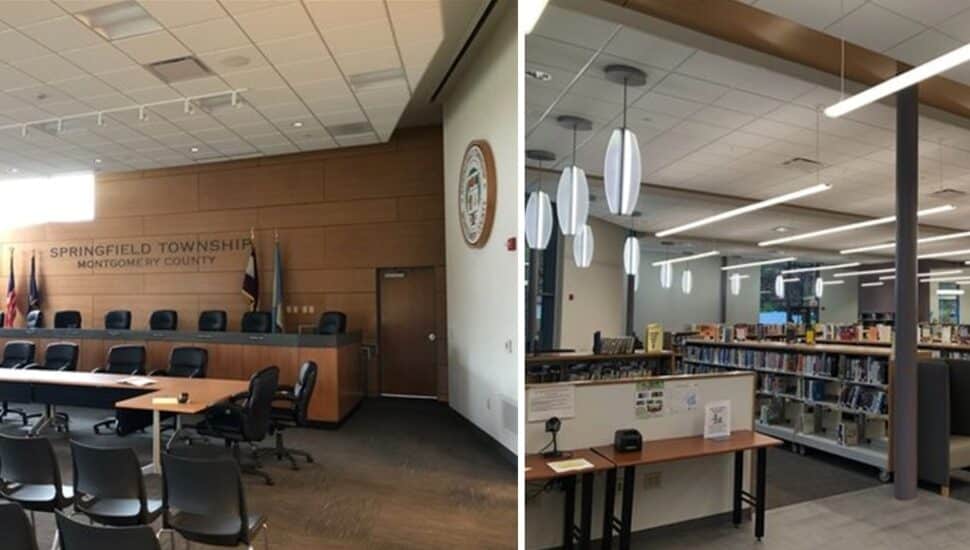Fine-Tuning HVAC Controls Reaps Big Savings for Clients of Spotts, Stevens, and McCoy

The work of Practical Energy Solutions for Springfield Township in Montgomery County was recently championed by the township’s Environmental Advisory Council.
Practical Energy Solutions — a division of Spotts, Stevens, and McCoy, a regional engineering, environmental, and surveying firm with an office in West Chester — provided both energy benchmarking services and an HVAC building automation system (BAS) controls analysis and modification plan.
An initial energy benchmark of three township buildings identified that two of the buildings, the Free Library and Police/Administration building, were underperforming. This suggested substantial opportunities to improve energy efficiency, leading to full HVAC Controls Analyses of both buildings.
Initial Controls Assessment
The energy team conducted a full assessment of the HVAC operations of both facilities during heating season. The team focused on the BAS controls, since the lighting systems were highly efficient and the building envelope was in good condition due to the relatively young age of the buildings.
The team identified ample opportunities to refine the controls and reduce energy consumption in both buildings. One or two measures required minor programming by the controls contractor, but most of the changes were simple and cost-free to the township:
- Administration/Police building: Identified seven measures that will conservatively reduce whole-building energy use by one-third, saving nearly $10,000 in annual utility costs and reducing the CO2 pollution by approximately 130,000 pounds every year.
- Free Library: Similar opportunities that will conservatively produce a 28 percent energy reduction, annual utility bill savings of approximately $6,200 and CO2 pollution reductions of more than 76,000 pounds annually.
These changes are expected to be highly cost effective and have the same environmental impact as planting nearly 4,800 mature trees or removing 21 passenger cars from the road.
Follow-Up Assessment
After two years, a second benchmark of whole-building energy performance of both facilities showed a clear and positive trend to reduced energy use. After partial implementation of recommendations, whole-building energy use in the Administration/Police and Library buildings has dropped 25 percent and 17 percent respectively, after normalizing for variations in weather climate. A second phase of BAS modifications is now underway, with further, substantial energy and utility bill savings anticipated.
Learn more about Spotts, Stevens, and McCoy.
Connect With Your Community
Subscribe to stay informed!
"*" indicates required fields







![95000-1023_ACJ_BannerAd[1]](https://vista.today/wp-content/uploads/2023/03/95000-1023_ACJ_BannerAd1.jpg)









































